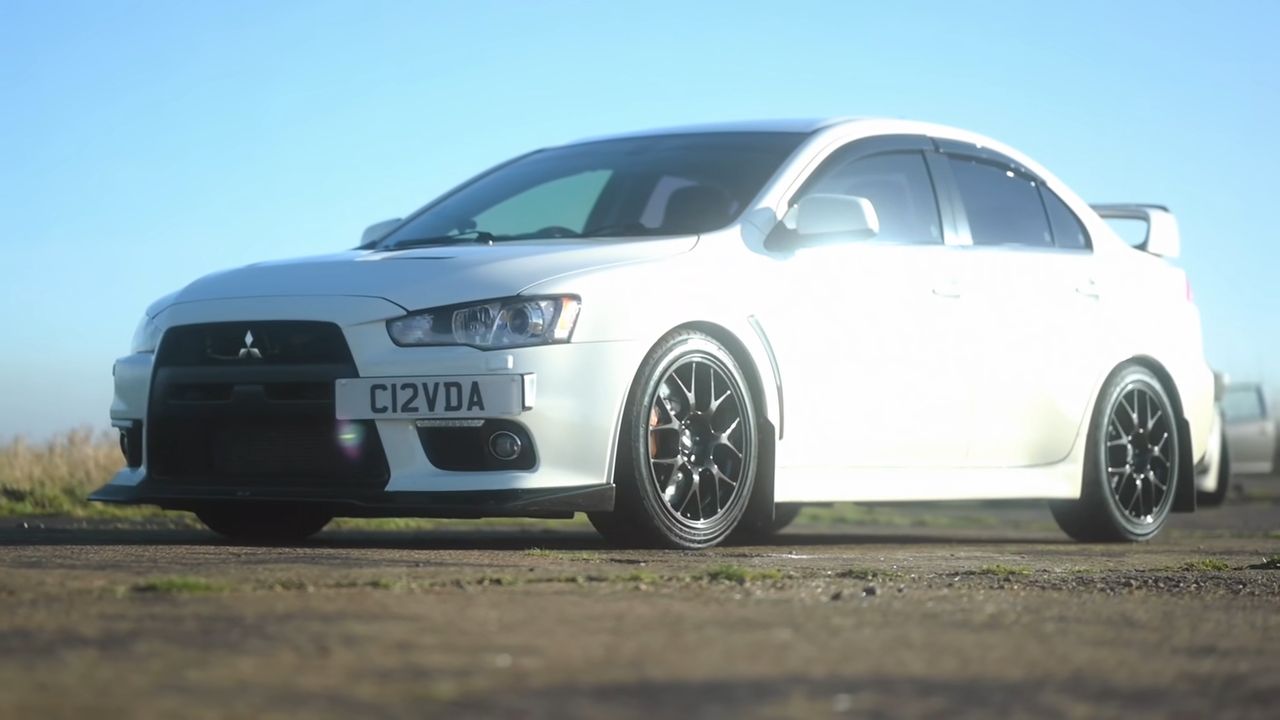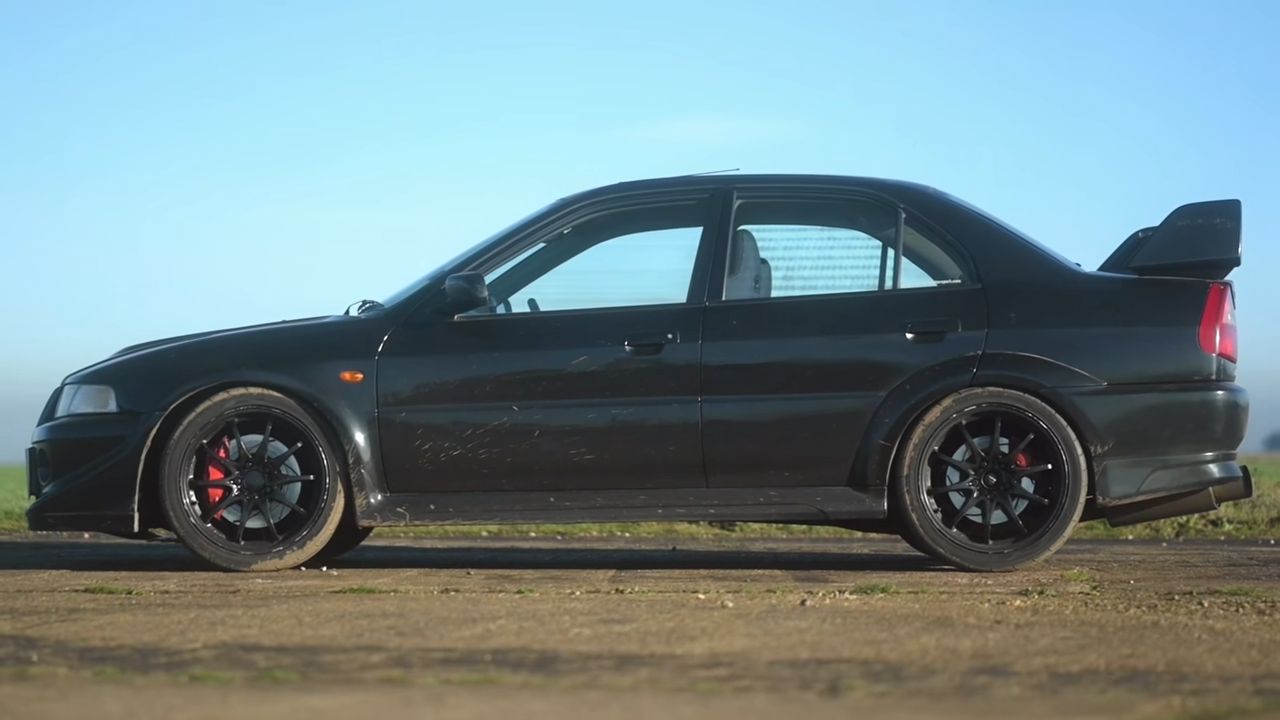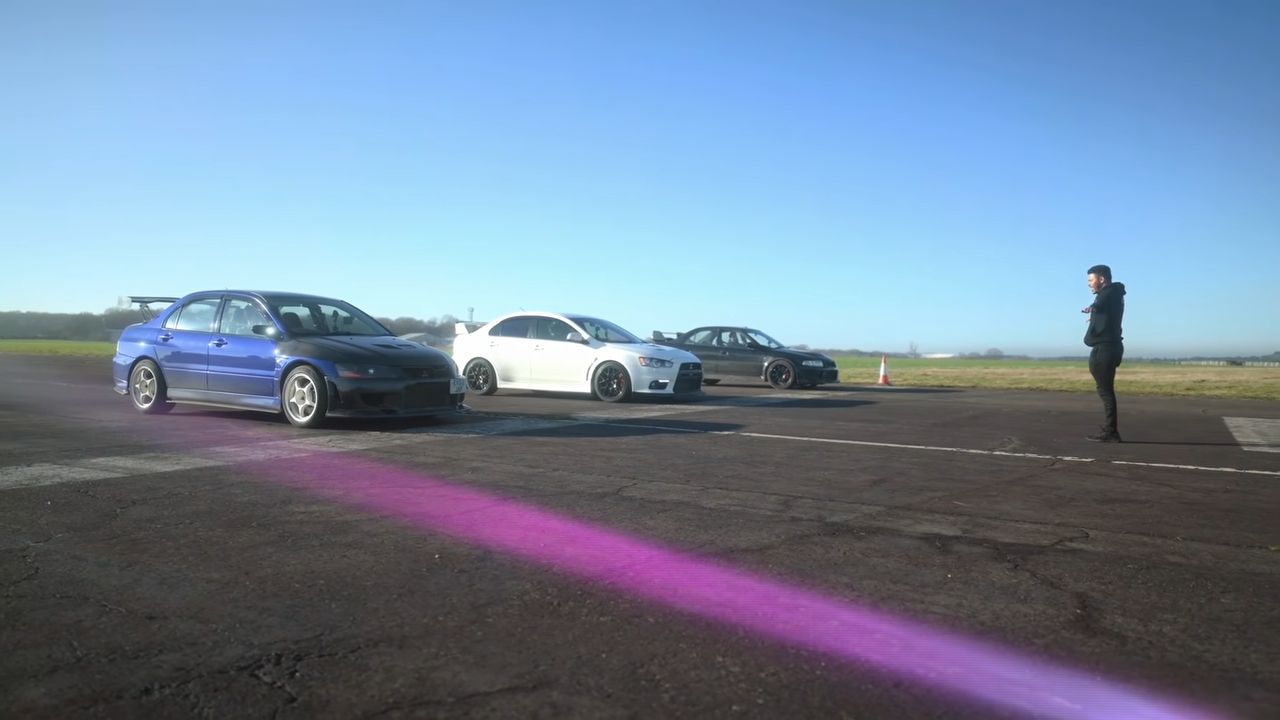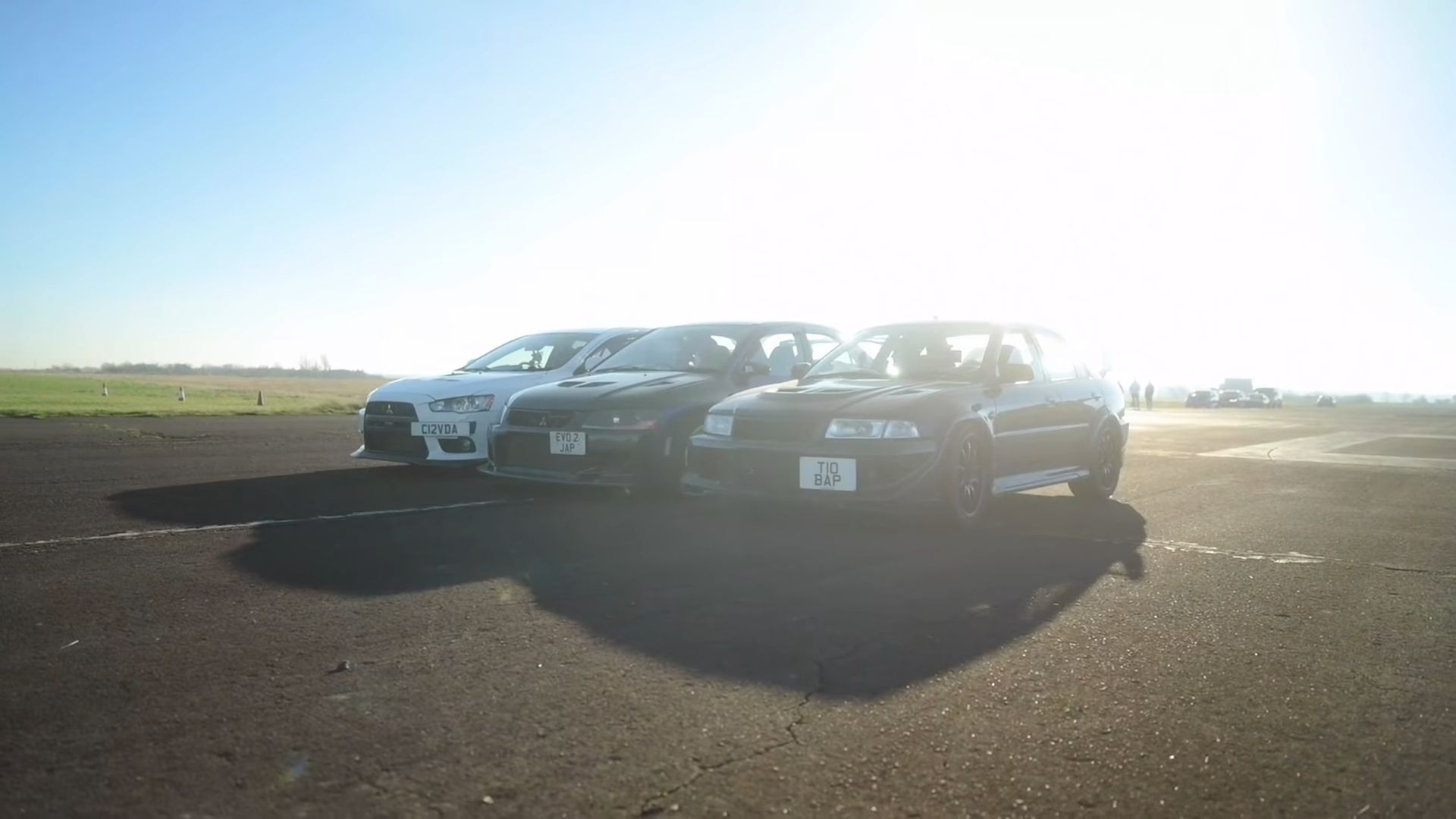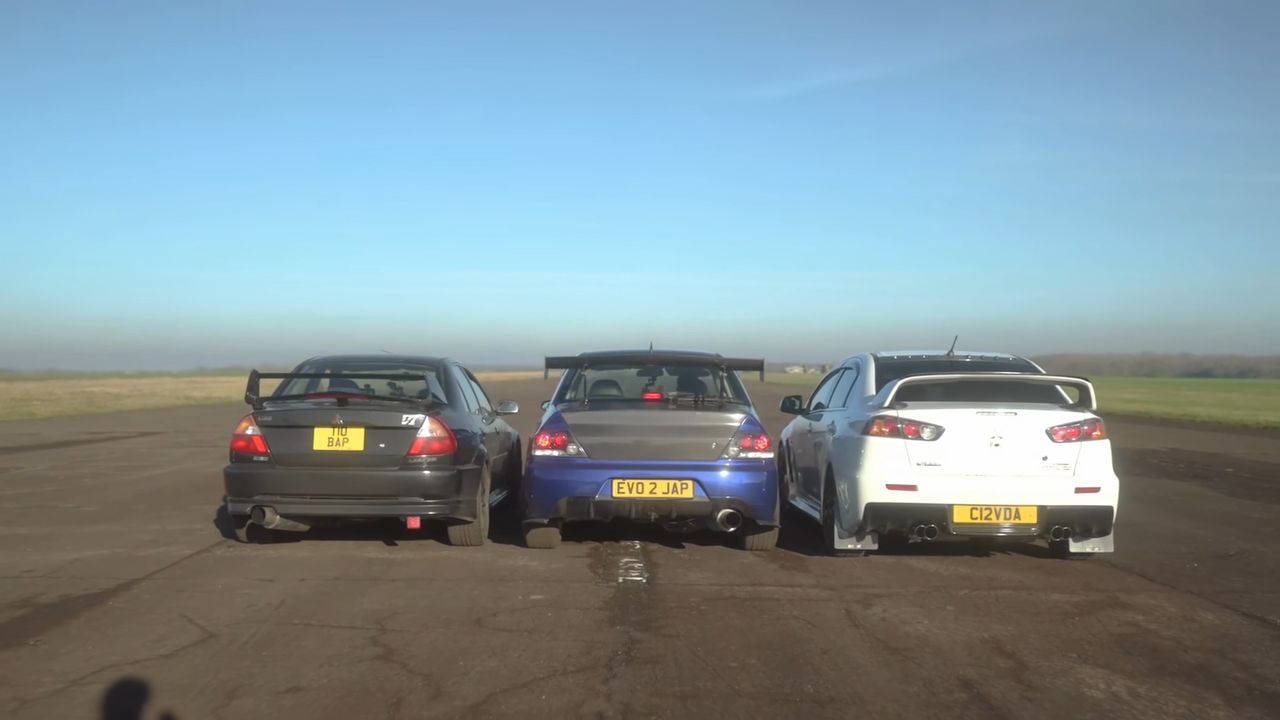The Mitsubishi Lancer Evolution is, sadly, no more. After 10 generations, the EVO was forced to retire, in August 2016. But the rally-bred, all-wheel-drive sedan still boasts a faithful community, and the YouTube channel, Officially Gassed has arranged for three different generations to appear on the same drag strip and lay down some numbers. Will the “stock” Lancer EVO X FQ440 be quick enough to hold its own against a 500-horsepower EVO VI and a 510-horsepower EVO VII?
Mitsubishi Lancer EVO VII
This is not the first time, this Evolution 7 has been featured on this channel, as it previously went against a similarly modified Subaru Impreza STI wagon. Built and tuned by Norris Design, the EVO 7’s modifications include a forged 4G63T, 2.0-liter long-rod engine, GT-262 camshafts, ID-1000 injectors, Ross Sport HP9 turbocharger, and a Link G4X ECU.
All this results in 510 horsepower, which goes to all four wheels through a five-speed manual. The EVO 7 also features more aggressive aero and Michelin Pilot Sport 4S tires. It also tips the scales at 3,086 pounds (1,400 kg).
Mitsubishi Lancer EVO X FQ440 MR
In addition to being the newest, the EVO X is also the only stock car here. However, it has been modified from the factory with a K&N air filter, HKS turbocharger, and a Jan Speed exhaust. The result is 440 horsepower. Naturally, it features all-wheel drive, but, the power goes through a six-speed dual-clutch automatic and Dunlop Sport Maxx tires. At 3,637 pounds (1,650 kg), it’s the heaviest car here.
Mitsubishi Lancer EVO VI
This Lancer Evolution VI is a classic not just in terms of model years, but in terms of when the build was done. The car has been maintained and tuned by Auto Torque while the engine has been built more than 12 years ago. Modifications include a fully forged 4G63T engine, Precision turbocharger, twin-plate clutch, and a Link G4X ECU.
The result is 500 horsepower on low boost and the car weighs just 2,866 pounds (1,300 kg). A five-speed manual sends power to all four wheels, which are wrapped in Yokohama ADO8 tires.
Acceleration and quarter-mile
All three cars have “grip for days” so it should be down to the driver’s reaction and gearbox. First up is the Evolution VI, which despite bogging down manages a 0 to 60 mph (97 km/h) time of 4.58 seconds. Next up is the EVO VII, which makes a gentle start and manages a 0 to 60 mph run of 4.91 seconds. The EVO X FQ440 MR is the last to go down the runway. Despite being the least powerful and heaviest, it manages 4.26 seconds from 0 to 60 mph.
As for the quarter-mile, the Lancer EVO VI manages a time of 12.44 seconds at 114.74 mph (184.66 km/h). The Evolution VII manages to post a best quarter-mile time of 13.33 seconds at 114.9 mph (184.9 km/h) although, last time it was here, it managed 12.54 seconds. Meanwhile, the EVO X managed 12.82 seconds at 109.96 mph (177 km/h).
Drag and rolling race
From a standing start, the Evolution VI rocketed off the line, followed by the Evolution VII. Surprisingly, the DCT-equipped Lancer EVO X had the slowest launch. The results are pretty obvious. The oldest and lightest car showed its younger siblings how it’s done, by gapping the EVO VII by a few car lengths. The Evolution VII, in turn, did the same damage to the heavier, automatic Lancer Evolution X.
The second drag race, however, shows the EVO X making a good start, leaving the Evolution VII at the back of the pack. However, the 510 horsepower come into play in the second half of the race, allowing the Evolution VII to just about beat the EVO X. Meanwhile, the Evolution VI won convincingly, yet again.
From a 50 mph (80.5 km/h) roll, even the DCT-equipped Lancer EVO X FQ440 MR couldn’t match the pick-up of the lightweight EVO VI. It did, however, pull on the Evolution VII, which also missed a gear, allowing the EVO X to take second place. The second rolling race is really close, but the EVO VI still manages to beat the rest. The heaviest car, once again, finishes last.
Final thoughts
While a simple straight-line performance test does not reveal the Lancer EVO’s true capabilities, it clearly shows the disadvantages that come with modern cars. As cars get heavier and more complex, old-school performance heroes like the Evolution VI show that simple and lightweight is still the best way to go, when it comes to a visceral driving experience and sheer performance.



